Architecture
Cambodian-Canadian hoping to improve life in his homeland
Intern architect Lee Lourn is no stranger to struggle. With his new project, he hopes to give back to his home country.
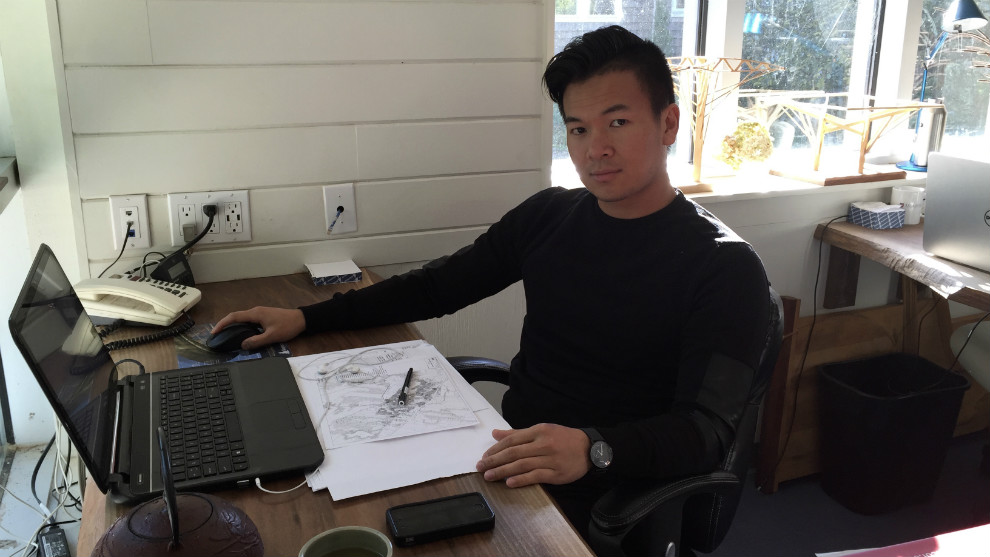
caption
Lee Lourn at his office in Dartmouth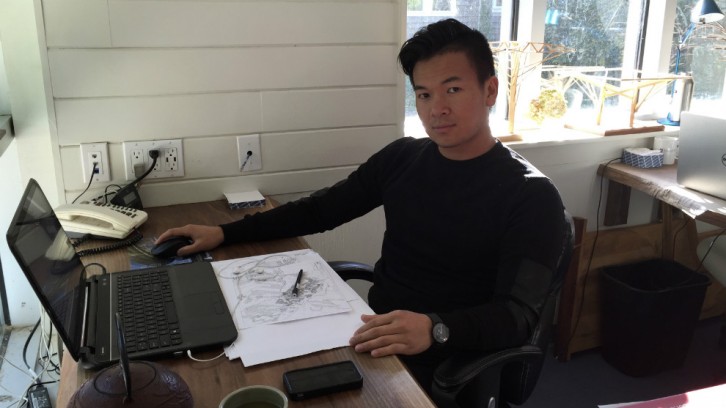
caption
Lee Lourn at his office in DartmouthPacing about his contemporarily devised, sunlit-drenched house of an office in Dartmouth, Lee Lourn points out his design plans for his latest project The Floating Structures.
Lourn, an intern architect, isn’t just displaying any run-of-the-mill architectural design either; he is showing off a grand, lotus flower-shaped community hub which, in his vision, would be situated on Tonle Sap Lake in Cambodia if it is chosen as the winning design of Eleven Magazine’s Cambodia 2015 competition.
The competition is the first of its kind from the 2015-conceived U.K.-based architectural magazine in a series of global competitions that focus on addressing issues in underdeveloped countries through design. The winner of the competition will receive a prize equal to about $3,000, become a judge for next year’s competition, as well as take part in a team that will construct the proposed design should the project go live.
“I think this will benefit the community because it covers all of its needs,” said the 25-year-old architect about the project.
The aim of the competition is to find designers whose projects address problems plaguing the area, which is home to 1.2 million people. Presently, the region is facing severe threats from pollution and disease epidemics. The Floating Structures is a construction plan that focuses on providing the community with a pillar for municipal services such as health care, education, and research.
Lourn, a Cambodian immigrant, is intrigued at the prospect of helping people back in his homeland… because he knows just how hard it can be.
New in town
In 2003, Lourn, arriving in a chilly Ontario, was in search of a better life than his hometown could afford to offer. Political, economic, and family struggles in Cambodia motivated him to make the move to Canada alongside his brother and uncle. However, his transition wasn’t without difficulty.
“I got lost in the snow once, because all of the houses looked the same,” chuckled Lourn, making sport of the unfamiliar and frigid suburban landscape that he soon found himself attempting to acclimatize to.
It didn’t help matters much that Lourn was placed in French immersion classes before he even came to know Canada’s other official language, English. The daily miscommunications that he experienced caused him to develop an almost self-hatred of his cultural identity.
“I did not want to speak Cambodian anymore,” he said.
“There was a point when I hated that I couldn’t speak English and that people couldn’t understand me. It seemed like I was walking when everyone else was running… I was always trying to catch up and be better,” he added.
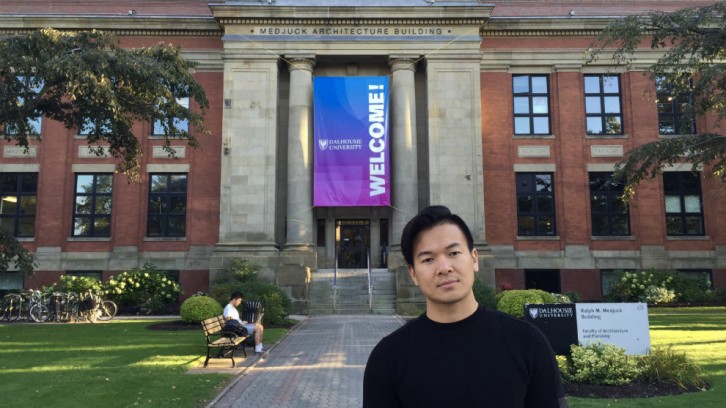
caption
“When I wake up I feel like I have a goal.”Despite adversity, Lourn kept his head down and held tight to his aspirations of a more prosperous life; and catch up he did.
Making it
Having a natural affinity for architecture, he migrated to Halifax to study at Dalhousie University. Although many architectural students may have more artistic leanings when asked why they choose to pursue the discipline, Lourn’s is more simplistic — and perhaps more profound.
On a fading autumn day, outside of Dalhousie’s architectural campus, from which he graduated two years ago, Lourn reflects.
“I always moved from one place to another and my family doesn’t have a real home,” he said. “I just felt like I wanted to be able to design and build my own house so I can have my own place that I can call home.”
In the world of architecture, linguistic and cultural barriers are secondary to visual aestheticism and real life human needs — leaving the door open for anyone with design-focused talents and aspirations to succeed — and succeeding is exactly what Lourn is doing.
In 2013 he was selected as the recipient for Dalhousie’s Bruce & Dorothy Rosetti Scholarship, for which he was awarded $5,000 to conduct his master’s thesis. Of all of the places in the world he could have chosen to research, Lourn decided to return home to Cambodia. Although it was a joy to be on familiar territory, he still thinks the country has a long way to go.
“The living situation is really hard,” said Lourn. “The political situation is really corrupt and the country is being slowly sold to neighbouring countries.”
He would later go on to be awarded with the Nova Scotia Association of Architects Thesis Prize for his thesis research.
Big things
Now home in the apartment he shares with his partner (yes, he’s found romance too), Lourn shows off a few of the physical models of The Floating Structures that he and his project partner, Richard Kroeker have created.
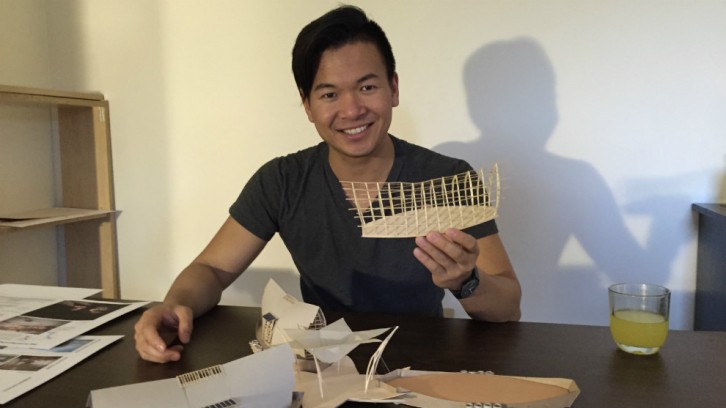
caption
Lourn displays models of structures he helped design.Resembling a lotus flower from a bird’s eye view, it features a plaza that anchors three individual, gigantic hut-looking enclosures, all of which would be used for their own respective purposes. If actually made, these models will be constructed with materials such as bamboo, palm leaves and wood, which are friendlier for the environment and more in tune with the local design in Cambodia.
“Super glue and a lot of patience,” jokes Lourn about the time and effort that goes into piecing together the minuscule toothpick-esque examples of what is yet to come.
With 162 entries, 12 judges and a People’s Choice category, there’s no telling who could win the Cambodia 2015 competition, but Lourn’s personal connection to the country informs his drive to win. Whatever the outcome, Lourn is certain that he will return home once again to contribute to the blossoming of his country. He hopes to be an inspiration to anyone who dreams of a better life.
“When I wake up I feel like I have a goal. That’s what drives you to move your life forward,” he said.
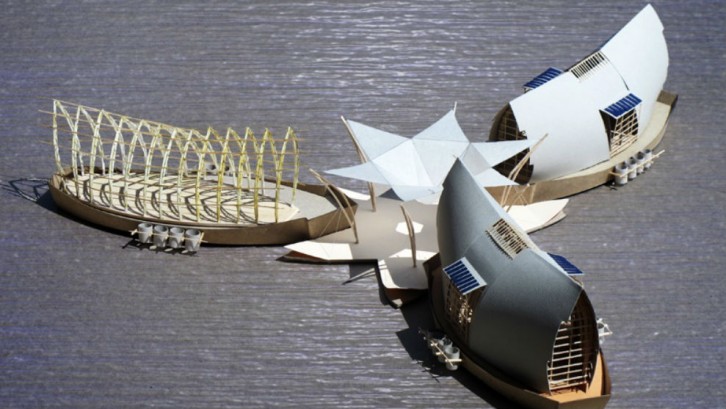
caption
The Floating Structures
